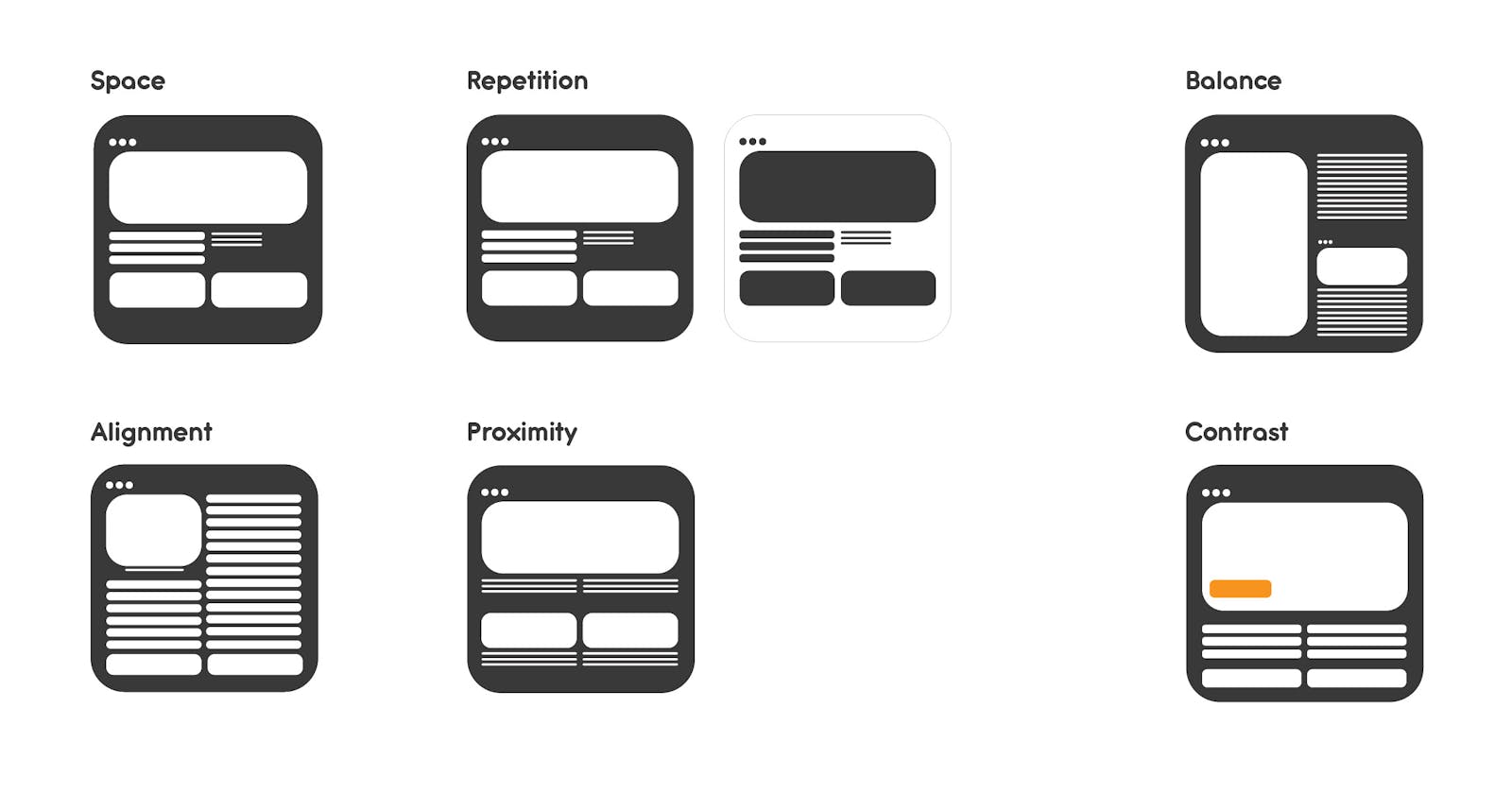The tools don't make you a better designer but understanding the principles of design would take you farther than you can imagine.
Yes, you actually read the topic right, the tools doesn't but the basics do. My recent article is centred on how to understand the principles of design
When I started my design journey, it was just me, myself and I, no mentor, no prior design knowledge, nothing, I were just in my second year in school and my dad just bought me a Toshiba laptop for school purposes, that was my first laptop ever but before all this, I have always had the intention to design or create something, you see, growing up, I drew a lot, I could just put my chest on the floor and just draw the tv host while she presents, but along the line I lost the interest to continue, I still don't know why or how, not until I saw various designs done my Mayowa Alabi of the CChub Co-Creation Hub Nigeria and my love for the arts spiked again, then I had commenced my B.sc studies in Accounting, then, I couldn't imagine myself being a designer, especially a designer in the tech world. I started my design journey with Photoshop just by watching videos off YouTube of designers doing their thing and I tried mimicking what they did and designed, I tried the same method by implementing it differently from what I had watched, I would do a lot of copies just to prove that I had mastered what I had learnt and truly it helped with my mastery ability of different concepts, this took hours on end to get it done, at that point in my life I didn’t understand what principles where, I didn’t understand that there where things guiding the flow of design, what made it important, and user appealing, and easy to navigate, I didn't know there were processes to design appropriately, things like Hierarchy, Space, Repetition, Balance, Contrast, Alignment and Proximity what I just did was design because I could, 'who the hell can stop me, my inner voice speaks, I have a really strong inner voice', there was no thought process, just me making sure I can create nice things and get people to cheer me on after posting it on social media which was fun while it lasted. What I noticed was that I was growing horizontally and not vertically, the scales go up a notch and then I was back to ground zero and it just kept repeating itself over and over again, trust me it was frustrating, frustrating because I didn’t understand what was going on, I didn’t understand what next to do, I was stuck at a point in my design life. I was able to understand why a few years down the line, it was ‘knowledge’ the reason why I wasn’t growing was that I didn’t have the appropriate knowledge of what I was doing and how to navigate this uncharted waters I found myself in but once I understood that I needed to gain knowledge of the design process I immediately started reading articles, books, watching tutorials on design principles which I still do and ever since, it has been an exciting journey.
Here are the principles of design as highlighted in my second paragraph. Space, Repetition, Balance, Contrast, Alignment and Proximity
Space: Space in art refers to the distance or area between, around, above, below, or within elements. Both positive and negative space are important factors to be considered in every design.
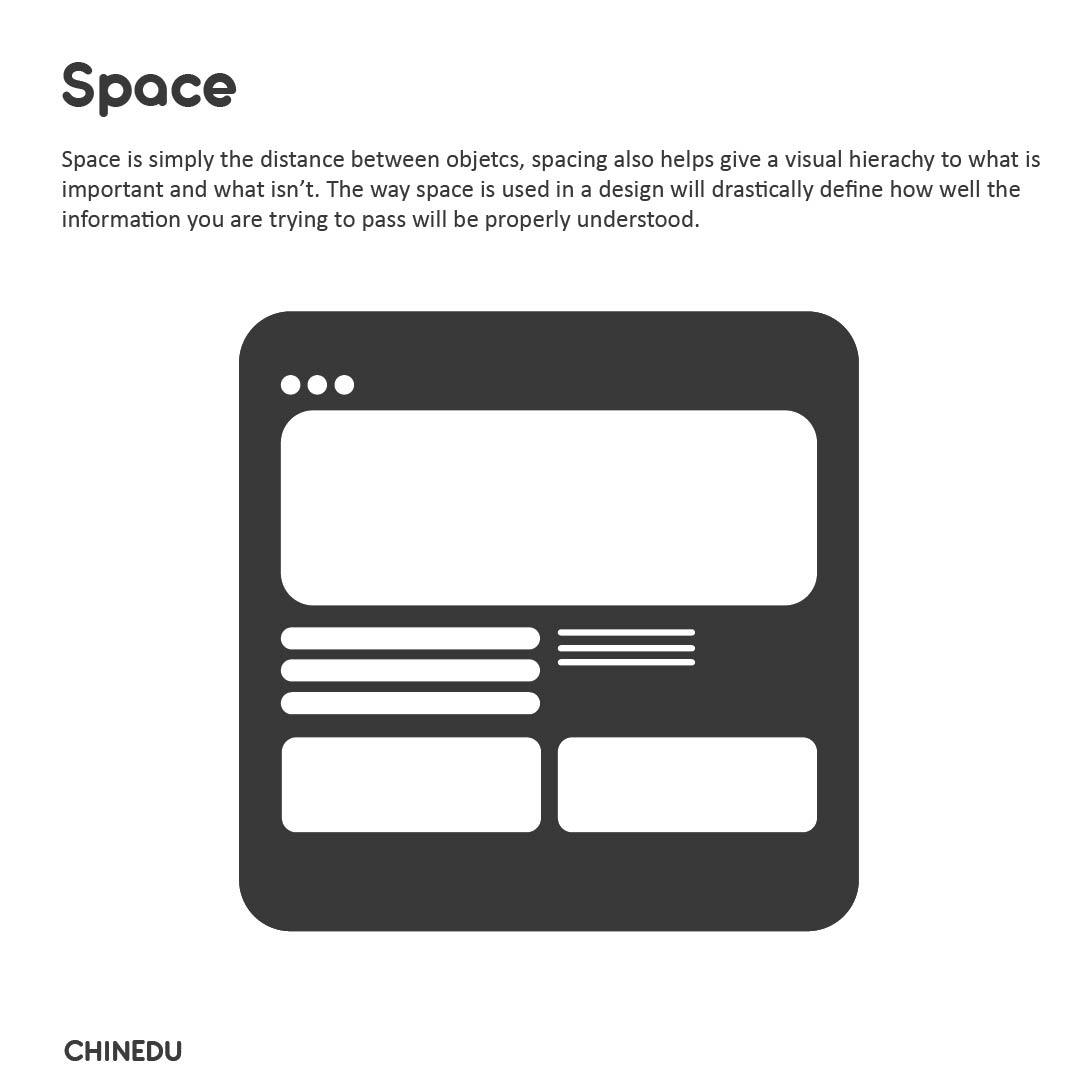
Repetition: Repetition strengthens a design by tying together individual elements. It helps to create association and consistency. Repetition can create rhythm (a feeling of organized movement).
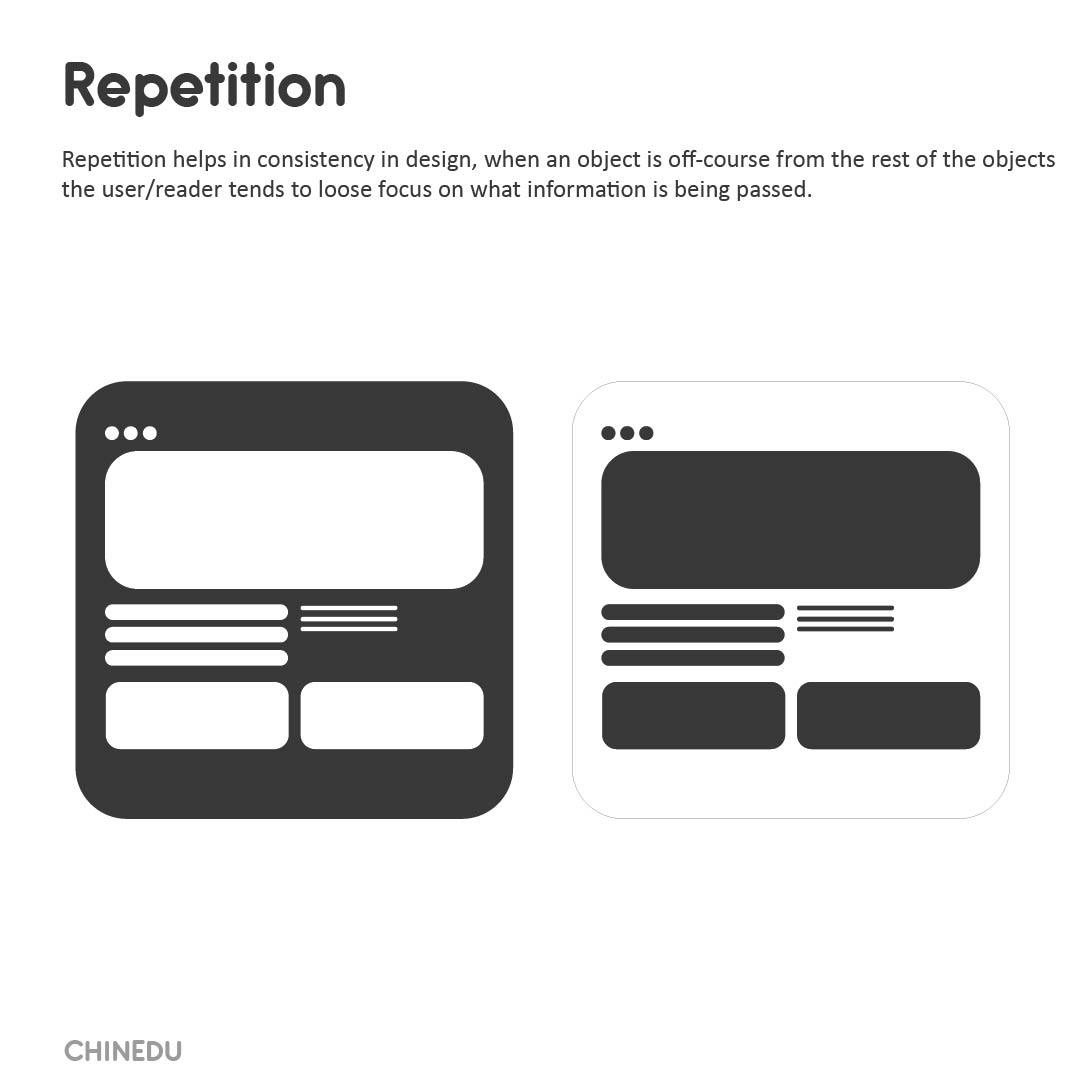
Balance: Balance in design is similar to balance in physics. A large shape close to the centre can be balanced by a small shape close to the edge. Balance provides stability and structure to a design. It’s the weight distributed in the design by the placement of your elements.
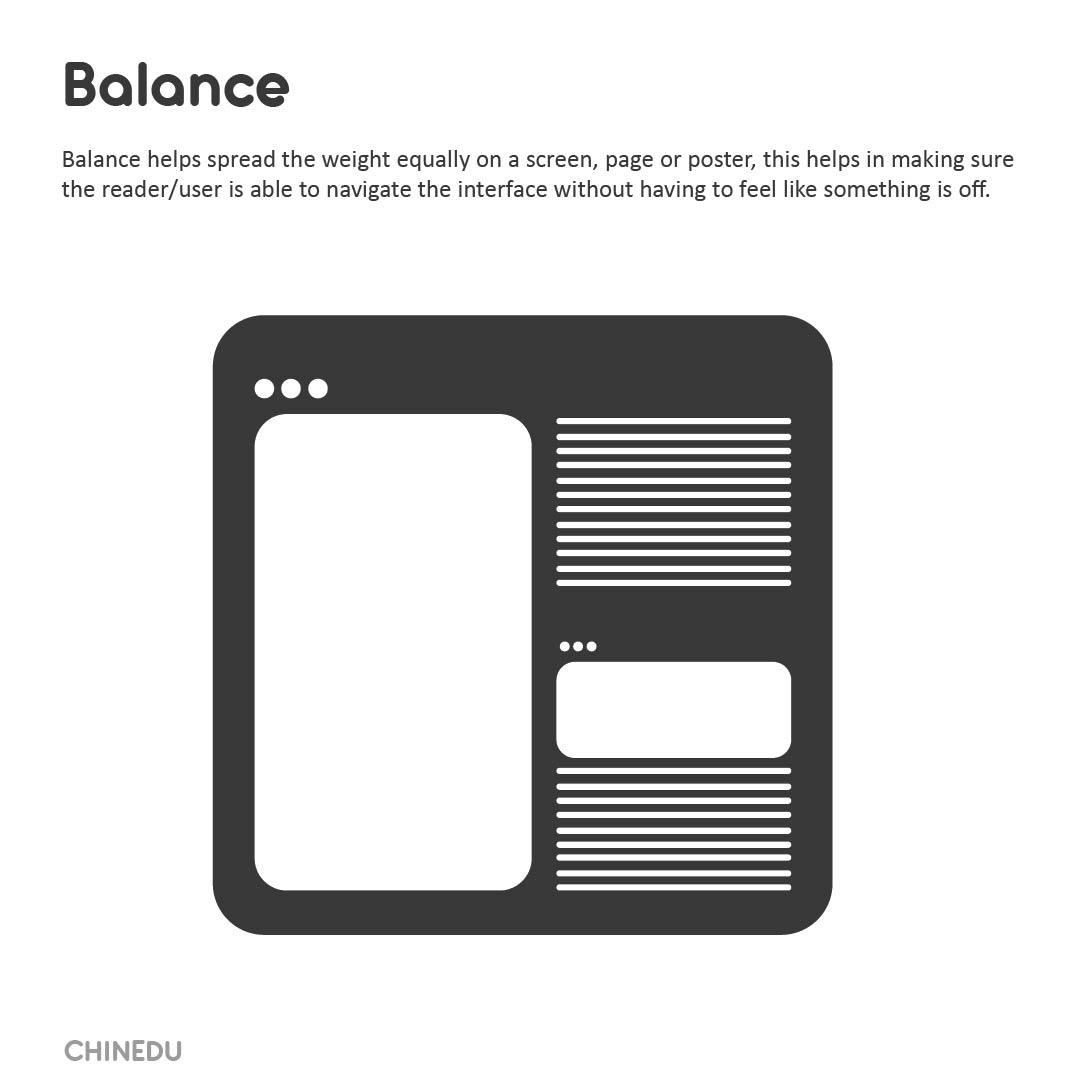
Contrast: Contrast is the juxtaposition of opposing elements (opposite colours on the colour wheel, or value light/dark, or direction – horizontal/vertical). Contrast allows us to emphasize or highlight key elements in your design.

Alignment: Allows us to create order and organisation. Aligning elements allows them to create a visual connection with each other.
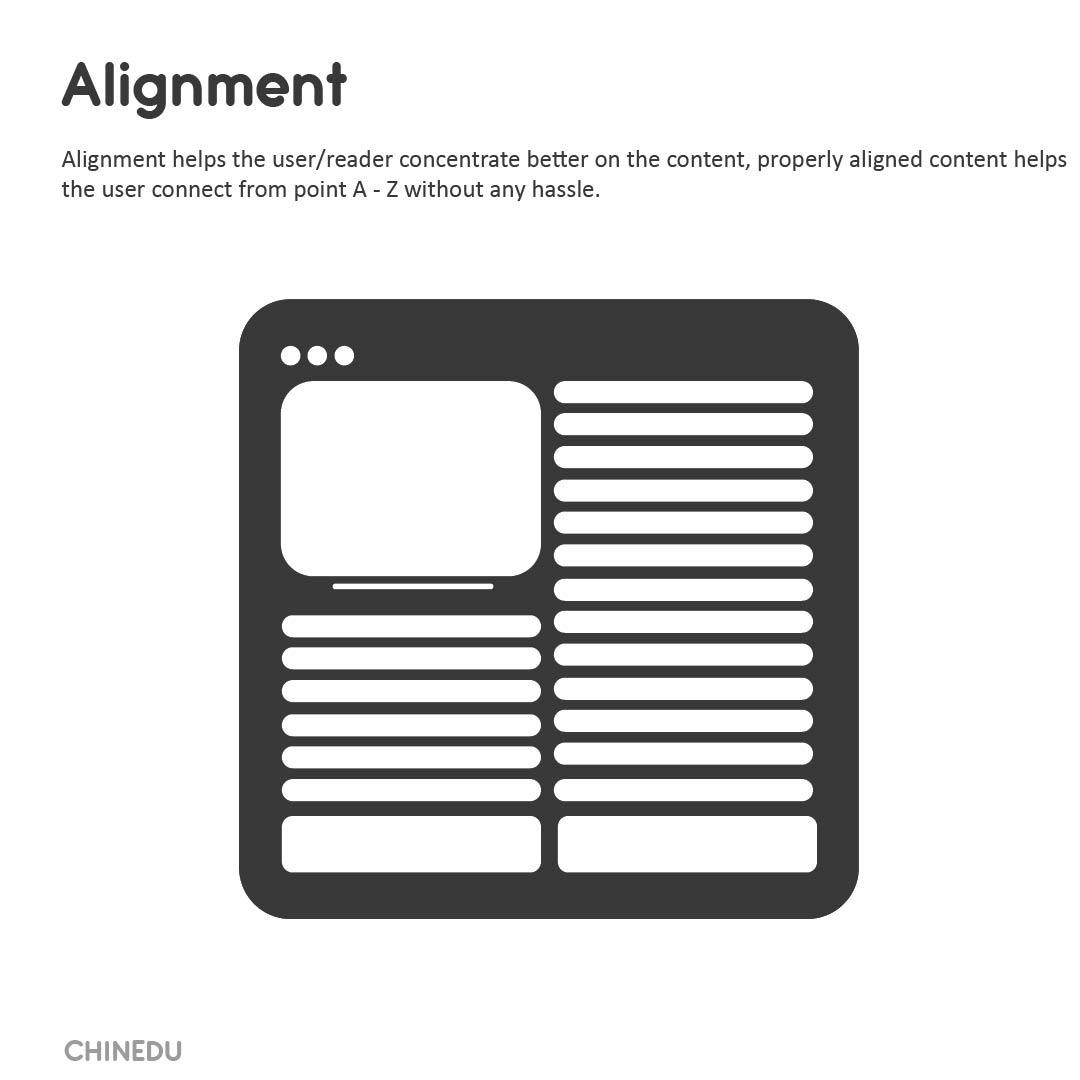
Proximity: Proximity creates the relationship between elements. It provides a focal point. Proximity doesn’t mean that elements have to be placed together, it means they should be visually connected in some way.

These principles would shorten your frustration when next you are designing for a user; it has worked for me and I have a strong feeling it will work for you too when you follow the principles accordingly . I hope to see you guys soon with a new blog post, enjoy your day

